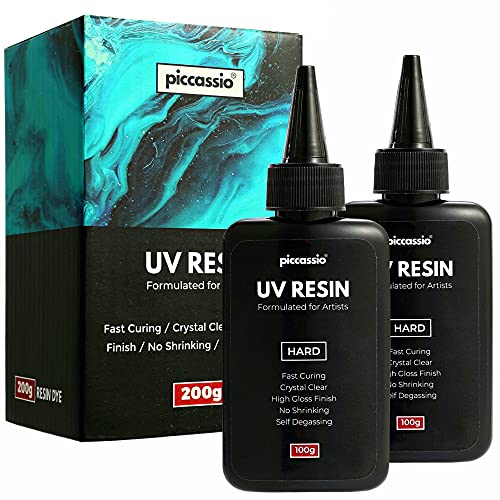Many people who are just getting into 3D printing find themselves asking, “What is UV resin?” UV resin is one of the two most common types of resin used in 3D printing.
It does not need to be mixed, unlike epoxy resin. UV resin is ready for use right away.
UV resin gets its name because it only cures (solidifies) under UV radiation. The maximum layer thickness of UV resin is only 1mm. Read on to learn more about the pros and cons of UV resin.
Pros of UV Resin
The main advantage that UV resin holds over traditional epoxy resin is how quickly it can be used. The epoxy resin must be prepared by mixing the resin itself with the hardener. This process is both tedious and time-consuming. UV resin does not come in two separate parts, so you can skip the mixing step.
UV resin also has a much quicker curing time than epoxy resin. Epoxy resin can take anywhere from several hours to a couple of days to cure. UV resin, on the other hand, cures within minutes upon the application of UV radiation.
UV resin is also easier to work with, as it does not begin to cure until irradiation. This means that you can mold it as much as you need without having to worry about the resin curing while you are working. This is a common problem when working with epoxy resin.
Cons of UV Resin
One of the biggest cons of UV resin is that it has a short shelf life. In fact, UV resin only lasts about six months. Additionally, UV resin can only be cast in very thin layers. Some sources state that UV resin can be cast in 1mm thick layers, while others state that UV resin can be cast in layers of 3mm-4mm. Either way, epoxy resin can be cast in much thicker layers. Epoxy resin can be cast in layers of up to 3cm.
One of the other cons of UV resin is that it is more expensive than epoxy resin. However, the cost difference has been decreasing over the last few years.
Finally, UV resin requires a special UV lamp to cure. These lamps are relatively inexpensive and easy to use. However, it does add another piece of equipment that must be maintained as part of your operation. Some people try to simply use the natural UV rays from the sun to cure UV resin. However, the natural UV rays from the sun are simply not strong enough to cure the resin. It may cure partially, but it will not cure fully.
Applications of UV Resin
UV resin is most often used for small items. It is commonly used for resin jewelry. UV resin also has applications outside of 3D printing. It is an excellent sealant. It is also a great adhesive.
UV Light Source for UV Resin
The only piece of technology that is specific to UV resin is the UV light source. Of course, coloring, molds, and the 3D printer itself are all required as well. However, all resins require this.
The UV light source required for UV resin can be made specifically for use with 3D printing. However, many people use a UV lamp designed for use in nail salons. These lamps are powerful and can cure a large area of resin at once.
It can cure all of the resin under the lamp in two minutes or even less. You may want to supplement a UV lamp with a UV flashlight so that you can cure the resin in areas that would be difficult to get to with a lamp.


